Myrtille commune | ||||
| Calluna vulgaris | Callune | |||
| Carex pilulifera | Laîche à pilules | |||
| Deschampsia flexuosa | Canche flexueuse | |||
| Dicranum scoparium | Dicrane en balais | |||
| Galium saxatile | Gaillet des rochers | |||
| Leucobryum glaucum | Leucobryum glauque | |||
| Luzula multiflora | Luzule multiflore | |||
| Vaccinium myrtillus | Myrtille | |||
Molinie | ||||
| Blechnum spicant | Blechne en épi | |||
| Luzula sylvatica | Luzule des bois | |||
| Molinia caerulea | Molinie bleue | |||
| Oreopteris limbosperma | Oréoptéris à sores en marge | |||
| Trientalis europaea | Trientale d'Europe | |||
Sphaignes | ||||
| Erica tetralix | Bruyère à quatre angles | |||
| Osmunda regalis | Osmonde royale | |||
| Polytrichum commune | Polytric commun | |||
| Salix aurita | Saule à oreillettes | |||
| Scutellaria minor | Petite scutellaire | |||
| Sphagnum sp. | Sphaignes | |||
| Vaccinium uliginosum | Airelle des marais | |||
| Viola palustris | Violette des marais | |||
Germandrée scorodoine | ||||
| Agrostis capillaris | Agrostide capillaire | |||
| Anthoxanthum odoratum | Flouve odorante | |||
| Calamagrostis arundinacea | Calamagrostide faux roseau | |||
| Frangula alnus | Bourdaine | |||
| Hieracium lachenalii | Epervière vulgaire | |||
| Hieracium laevigatum | Epervière lisse | |||
| Hieracium sabaudum | Epervière de Savoie | |||
| Hieracium umbellatum | Epervière en ombrelle | |||
| Holcus mollis | Houlque molle | |||
| Hypericum humifusum | Millepertuis couché | |||
| Hypericum pulchrum | Millepertuis élégant | |||
| Ilex aquifolium | Houx | |||
| Lathyrus linifolius var.montanus | Gesse des montagnes | |||
| Luzula luzuloïdes | Luzule blanchâtre | |||
| Maianthemum bifolium | Maianthème à deux feuilles | |||
| Mespilus germanica | Néflier | |||
| Polytrichum formosum | Polytric élégant | |||
| Polygonatum verticillatum | Sceau de Salomon verticillé | |||
| Pteridium aquilinum | Fougère aigle | |||
| Teucrium scorodonia | Germandrée scorodoine | |||
Epilobe en épis | ||||
| Cytisus scoparius | Genêt à balais | |||
| Digitalis purpurea | Digitale pourpre | |||
| Epilobium angustifolium | Epilobe en épi | |||
| Sambucus racemosa | Sureau à grappes | |||
| Senecio nemorensis | Séneçon de Fuchs | |||
| Senecio sylvaticus | Sénéçon des bois | |||
Dryoptéris | ||||
| Betula pubescens | Bouleau pubescent | |||
| Carex pallescens | Laîche pâle | |||
| Dryopteris carthusiana | Dryoptéris de Chartreuse | |||
| Dryopteris dilatata | Polystic dilaté | |||
Cirse des marais | ||||
| Agrostis canina | Agrostide des chiens | |||
| Carex laevigata | Laîche lisse | |||
| Cirsium palustre | Cirse des marais | |||
| Epilobium palustre | L'épilobe des marais | |||
| Equisetum sylvaticum | Prêle des bois | |||
| Galium palustre | Gaillet des marais | |||
| Galium uliginosum | Gaillet des fanges | |||
| Lotus uliginosus | Lotier des marais | |||
| Scirpus sylvaticus | Scirpe des bois | |||
| Valeriana dioica | Valériane dioique | |||
Violette de Rivin | ||||
| Luzula pilosa | Luzule poilue | |||
| Poa chaixii | Pâturin de Chaix | |||
| Potentilla sterilis | Potentille stérile | |||
| Stellaria holostea | Stellaire holostée | |||
| Viola riviniana | Violette de Rivin | |||
Anémone sylvie | ||||
| Acer pseudoplatanus | Erable sycomore | |||
| Anemone nemorosa | Anémone des bois | |||
| Atrichum undulatum | Atrichie ondulé | |||
| Carpinus betulus | Charme | |||
| Corylus avellana | Noisetier | |||
| Dryopteris filix-mas | Fougère mâle | |||
| Epilobium montanum | Epilobe des montagnes | |||
| Milium effusum | Millet diffus | |||
| Phyteuma nigrum | Raiponce noire | |||
| Poa nemoralis | Pâturin des bois | |||
| Polygonatum multiflorum | Sceau de Salomon multiflore | |||
| Scrophularia nodosa | Scrofulaire noueuse | |||
| Vinca minor | Petite pervenche | |||
Fétuque des bois | ||||
| Festuca altissima | Fétuque des bois | |||
Fougère femelle | ||||
| Athyrium filix-femina | Fougère femelle | |||
| Carex remota | Laîche à épis espacés | |||
| Deschampsia cespitosa | Canche cespiteuse | |||
| Glyceria declinata | Glycérie dentée | |||
| Juncus conglomeratus | Jonc aggloméré | |||
| Juncus effusus | Jonc épars | |||
| Lysimachia nemorum | Lysimaque des bois | |||
| Oxalis acetosella | Oxalide petite oseille* | |||
| Polygonum hydropiper | Renouée poivre d'eau | |||
| Ranunculus flammula | Renoncule flamette | |||
| Succisa pratensis | Succise des prés | |||
Reine-des-prés | ||||
| Agrostis stolonifera | Agrostide stolonifère | |||
| Alnus glutinosa | Aulne glutineux | |||
| Angelica sylvestris | Angélique des bois | |||
| Elymus caninus | Chiendent des chiens | |||
| Filipendula ulmaria | Reine des prés | |||
| Ranunculus repens | Renoncule rampante | |||
| Valeriana repens | Valériane officinale rampante | |||
Alisier Torminal | ||||
| Anthericum liliago | Phalangère à fleur de lis | |||
| Campanula persicifolia | Campanule à feuilles de pêcher | |||
| Silene nutans | Silène penché | |||
| Sorbus aria | Alisier blanc | |||
| Sorbus torminalis | Alisier torminal | |||
Lamier jaune | ||||
| Brachypodium sylvaticum | Brachypode des bois | |||
| Carex sylvatica | Laîche des bois | |||
| Dactylis glomerata | Dactyle aggloméré | |||
| Epipactis helleborine | Epipactis à feuilles larges | |||
| Euphorbia amygdaloides | Euphorbe des bois | |||
| Fragaria vesca | Fraisier des bois | |||
| Hyacinthoides non-scripta | Jacinthe des bois | |||
| Lamiastrum galeobdolon | Lamier jaune | |||
| Lapsana communis | Lampsane commune | |||
| Prunus avium | Merisier | |||
| Veronica chamaedrys | Véronique petit chêne | |||
| Vicia sepium | Vesce des haies | |||
| Viola reichenbachiana | Violette de Reichenbach | |||
Polystic à aiguillons | ||||
| Cardamine impatiens | Cardamine impatiente | |||
| Cystopteris fragilis | Cystoptéride fragile | |||
| Gymnocarpium dryopteris | Polypode du Chêne | |||
| Polystichum aculeatum | Polystic à aiguillons | |||
| Ranunculus platanifolius | Renoncule à feuille de platane | |||
| Ulmus glabra | Orme de montagne | |||
Benoîte commune | ||||
| Galeopsis tetrahit | Galéopsis tétrahit | |||
| Geranium robertianum | Géranium herbe à Robert | |||
| Geum urbanum | Benoite commune | |||
| Moehringia trinervia | Moehringie à 3 nervures | |||
| Myosotis sylvatica | Myosotis des forêts | |||
| Sambucus nigra | Sureau noir | |||
| Silene dioïca | Silène dioique | |||
Circée de Paris | ||||
| Ajuga reptans | Bugle rampante | |||
| Cardamine pratensis | Cardamine des prés | |||
| Circaea lutetiana | Circée de Paris | |||
| Colchicum autumnale | Colchique d'automne | |||
| Poa trivialis | Pâturin commun | |||
| Ribes rubrum | Groseiller rouge | |||
| Stachys sylvatica | Epiaire des bois | |||
| Veronica montana | Véronique des montagnes | |||
Stellaire des bois | ||||
| Aconitum lycoctonum subsp.vulparia | Aconit tue-loup | |||
| Chrysosplenium alternifolium | Dorine à feuilles alternées | |||
| Festuca gigantea | Fétuque géante | |||
| Impatiens noli-tangere | Impatiente n' y touchez pas | |||
| Petasites hybridus | Pétasite hybride | |||
| Polygonum bistorta | Renouée bistorte | |||
| Salix alba | Saule blanc | |||
| Stellaria nemorum | Stellaire des bois | |||
Populage des marais | ||||
| Caltha palustris | Populage des marais | |||
| Carex elongata | Laîche allongée | |||
| Crepis paludosa | Crépide des marais | |||
| Iris pseudacorus | Iris faux acore | |||
| Lycopus europaeus | Lycope d'Europe | |||
| Lysimachia vulgaris | Lysimaque commune | |||
| Phalaris arundinacea | Baldingère | |||
| Scutellaria galericulata | Scutellaire casquée | |||
| Stachys palustris | Epiaire des marais | |||
Dorine à feuilles opposées | ||||
| Cardamine amara | Cardamine amère | |||
| Cardamine flexuosa | Cardamine flexueuse | |||
| Chrysosplenium oppositifolium | Dorine à feuilles opposées | |||
| Glyceria fluitans | Glycérie flottante | |||
| Myosotis scorpioides | Myosotis faux scorpion | |||
| Stellaria alsine | Stellaire des fanges | |||
Aspérule odorante | ||||
| Acer campestre | Erable champêtre | |||
| Acer platanoides | Erable plane | |||
| Campanula trachelium | Campanule gantelée | |||
| Cornus sanguinea | Cornouiller sanguin | |||
| Crataegus laevigata | Aubépine épineuse | |||
| Daphne mezereum | Bois joli | |||
| Euonymus europaeus | Fusain d'Europe | |||
| Galium odoratum | Aspérule odorante | |||
| Galium sylvaticum | Gaillet des bois | |||
| Hypericum hirsutum | Millepertuis velu | |||
| Melica uniflora | Mélique uniflore | |||
| Mycelis muralis | Mycélis des murs | |||
| Neottia nidus-avis | Néottie nid d'oiseau | |||
| Phyteuma spicatum | Raiponce en épi | |||
| Ribes uva-crispa | Groseillier a maquereau | |||
| Rosa arvensis | Rosier des champs | |||
| Rosa canina | Rosier des chiens | |||
| Sanicula europaea | Sanicle d'Europe | |||
| Scilla bifolia | Scille à deux feuilles | |||
| Ulmus minor | Orme champetre | |||
| Valeriana officinalis | Valériane officinale des collines | |||
Gouet tacheté | ||||
| Arum maculatum | Gouet tacheté | |||
| Listera ovata | Listère ovale | |||
| Ornithogalum pyrenaicum | Ornithogale des Pyrénées | |||
| Paris quadrifolia | Parisette | |||
| Ranunculus auricomus | Renoncule à tête d'or | |||
Ortie dioïque | ||||
| Aegopodium podagraria | Egopode podagraire | |||
| Alliaria petiolata | Alliaire | |||
| Anthriscus sylvestris | Cerfeuil sauvage | |||
| Arctium nemorosum | Bardane des bois | |||
| Chaerophyllum temulum | Cerfeuil penché | |||
| Galium aparine | Gaillet gratteron | |||
| Glechoma hederacea | Lierre terrestre | |||
| Heracleum sphondylium | Berce sphondyle | |||
| Symphytum officinale | Consoude officinale | |||
| Urtica dioica | Ortie dioïque | |||
| Veronica hederifolia | Véronique à feuilles de lierre | |||
Ficaire | ||||
| Adoxa moschatellina | Adoxe musquée | |||
| Fraxinus excelsior | Frêne commun | |||
| Primula elatior | Primevère élevée | |||
| Pulmonaria obscura | Pulmonaire à fleurs sombres | |||
| Ranunculus ficaria | Ficaire fausse-renoncule | |||
Laîche des marais | ||||
| Calystegia sepium | Liseron des haies | |||
| Carex acuta | Laîche aiguë | |||
| Carex acutiformis | Laîche des marais | |||
| Carex paniculata | Laîche paniculée | |||
| Carex riparia | Laîche des rives | |||
| Lythrum salicaria | Lythrum salicaire | |||
| Ribes nigrum | Cassis | |||
| Solanum dulcamara | Morelle douce-amère | |||
Hellébore fétide | ||||
| Buxus sempervirens | Buis | |||
| Carex humilis | Laîche humble | |||
| Cornus mas | Cornouiller mâle | |||
| Daphne laureola | Daphné lauréole | |||
| Helleborus foetidus | Hellébore fétide | |||
| Ligustrum vulgare | Troène | |||
| Polygonatum odoratum | Sceau de Salomon odorant | |||
| Quercus pubescens | Chêne pubescent | |||
| Rhamnus cathartica | Nerprun purgatif | |||
| Rosa pimpinellifolia | Rosier pimprenelle | |||
| Sesleria albicans | Seslérie blanchâtre | |||
| Viburnum lantana | Viorne lantane | |||
| Vincetoxicum hirundinaria | Dompte-venin officinal | |||
| Viola hirta | Violette hérissée | |||
Laîche digitée | ||||
| Aquilegia vulgaris | Ancolie vulgaire | |||
| Atropa bella-donna | Belladone | |||
| Berberis vulgaris | Epine-vinette | |||
| Carex digitata | Laîche digitée | |||
| Carex montana | Laîche des montagnes | |||
| Cephalanthera sp. | Céphalanthères | |||
| Clematis vitalba | Clématite vigne blanche | |||
| Digitalis lutea | Digitale jaune | |||
| Lonicera xylosteum | Camerisier à balais | |||
| Melica nutans | Mélique penchée | |||
| Mercurialis perennis | Mercuriale pérenne | |||
| Orchis mascula | Orchis mâle | |||
| Origanum vulgare | Origan | |||
| Primula veris | Primevère officinale | |||
| Pulmonaria montana | Pulmonnaire des montagnes | |||
| Ribes alpinum | Groseillier des Alpes | |||
| Rubus saxatilis | Ronce des rochers | |||
| Tilia platyphyllos | Tilleul à grandes f. | |||
Langue de cerf | ||||
| Actaea spicata | Actée en épi | |||
| Asplenium scolopendrium | Scolopendre | |||
| Cardamine bulbifera | Cardamine bulbifère | |||
| Lunaria rediviva | Lunaire vivace | |||
Ail des ours | ||||
| Allium ursinum | Ail des ours | |||
| Anemone ranunculoides | Anémone fausse renoncule | |||
| Corydalis solida | Corydale à tubercule plein | |||
| Gagea lutea | Gagée jaune | |||
| Helleborus viridis | Hellébore vert | |||
| Lathraea squamaria | Lathrée écailleuse | |||
Cardère Velue | ||||
| Dipsacus pilosus | Cardère velue | |||
| Humulus lupulus | Houblon | |||
| Rubus caesius | Ronce bleuâtre | |||
| Ulmus laevis | Orme lisse | |||
Cirse maraîcher | ||||
| Cirsium oleraceum | Cirse maraîcher | |||
| Epilobium hirsutum | Epilobe hérissé | |||
| Eupatorium cannabinum | Eupatoire chanvrine | |||
| Scrophularia umbrosa | Scrofulaire ailée | |||
Grande Prêle | ||||
| Equisetum telmateia | Prêle géante | |||
catalogue des groupes ecologiques


-

 Tous les groupes
Tous les groupes-

 hyper-acidiphiles
hyper-acidiphiles-

 Myrtille commune
Myrtille commune -

 Molinie
Molinie -

 Sphaignes
Sphaignes
-
-

 acidiphiles
acidiphiles-

 Germandrée scorodoine
Germandrée scorodoine -

 Epilobe en épis
Epilobe en épis -

 Dryoptéris
Dryoptéris -

 Cirse des marais
Cirse des marais
-
-

 neutro-acidiclines
neutro-acidiclines-

 Violette de Rivin
Violette de Rivin -

 Anémone sylvie
Anémone sylvie -

 Fétuque des bois
Fétuque des bois -

 Fougère femelle
Fougère femelle -

 Reine-des-prés
Reine-des-prés
-
-

 neutroclines
neutroclines-

 Alisier Torminal
Alisier Torminal -

 Lamier jaune
Lamier jaune -

 Polystic à aiguillons
Polystic à aiguillons -

 Benoîte commune
Benoîte commune -

 Circée de Paris
Circée de Paris -

 Stellaire des bois
Stellaire des bois -

 Populage des marais
Populage des marais -

 Dorine à feuilles opposées
Dorine à feuilles opposées
-
-

 neutrophiles
neutrophiles-

 Aspérule odorante
Aspérule odorante -

 Gouet tacheté
Gouet tacheté -

 Ortie dioïque
Ortie dioïque -

 Ficaire
Ficaire -

 Laîche des marais
Laîche des marais
-
-

 calcaricoles
calcaricoles-

 Hellébore fétide
Hellébore fétide -

 Laîche digitée
Laîche digitée -

 Langue de cerf
Langue de cerf -

 Ail des ours
Ail des ours -

 Cardère Velue
Cardère Velue -

 Cirse maraîcher
Cirse maraîcher -

 Grande Prêle
Grande Prêle
-
-
PhytoSpy est un outil de diagnostic des stations forestières qui permet la prédiction des niveaux trophique et hydrique, tels que définis dans le Fichier Écologique des Essences, depuis un relevé floristique.
La démarche est basée sur les groupes écologiques. La flore indicatrice de Belgique est regroupée en 32 groupes écologiques qui sont indicateurs des conditions environnementales. Ces conditions stationnelles sont résumées sous la forme d'un écogramme, présenté à gauche. L'ensemble des plantes indicatrices du relevé permet de déterminer, de manière plus ou moins satisfaisante, les niveaux trophique et hydrique de la station forestière.
Les groupes écologiques
En 1969, Thange jette, pour le Sud de la Belgique, les fondements des groupes écologiques. Ces derniers sont définis comme un ensemble de plantes forestières qui partagent la même niche écologique. Ces groupes écologiques sont depuis couramment utilisés dans le sud de la Belgique pour la description des stations forestières.Les groupes écologiques de Belgique ont été révisés en 2020 préalablement à l'édition d'un guide illustré. C'est cette version très récente des groupes écologiques qui est présenté dans cette application web. Pour plus d'information, nous vous recommandons le nouveau catalogue des groupes écologiques;
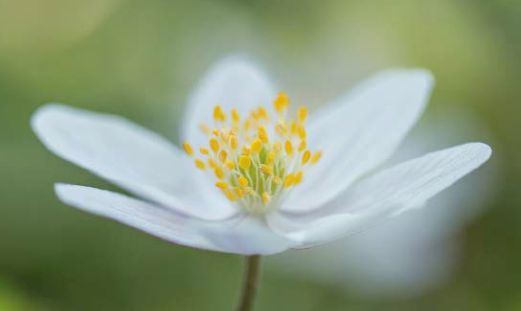
L'onglet "Groupe écologique"
Cet onglet présente la liste des groupes et des espèces qui les constituent. Le catalogue des groupes écologiques, situé à droite, regroupe les différents groupes en fonction de leur caractère indicateur du niveau trophique. Ce catalogue permet d'effectuer des filtres sur les groupes, afin de n'afficher que certains de ceux-ci.
Les espèces présentes dans le relevé sont affichées avec un fond grisé.
Dans cet onglet, un clic sur le nom en latin d'une espèce aura pour effet d'ajouter cette espèce au relevé floristique.
Pour obtenir un descriptif du groupe écologique, un double-clic sur le nom du groupe permet l'ouverture d'une fenêtre contenant des informations supplémentaires. Par ailleurs, la niche écologique du groupe s'affiche dans l'écogramme suite à l'action de cliquer sur le nom du groupe.
L'écogramme
L'écogramme est le concept au centre de la méthode du Fichier Écologique des Essences. Tantôt utilisé pour la définition des aptitudes des essences forestières, tantôt pour illustrer la distribution des espèces indicatrices, cette matrice hydro-trophique mérite que l'on s'attarde à sa description. D'autant plus qu'il existe de nombreux écogrammes différents, principalement utilisés en botanique et en écologie. Mais le maître mot est toujours le suivant ; représenter graphiquement les différentes conditions écologiques qui règnent sur un territoire. Hors, ces conditions stationnelles s'articulent autour de trois gradients majeurs ; le climat, le gradient hydrique et le gradient trophique. En amenant l'hypothèse que les informations climatiques disponibles en Belgique permettent une description complète de la totalité du territoire wallon, pour lequel dix zones bioclimatiques sont définies, les deux gradients susceptibles de changer localement sont la disponibilité en eau (et en oxygène dans une certaine mesure) et la disponibilité en élément minéraux.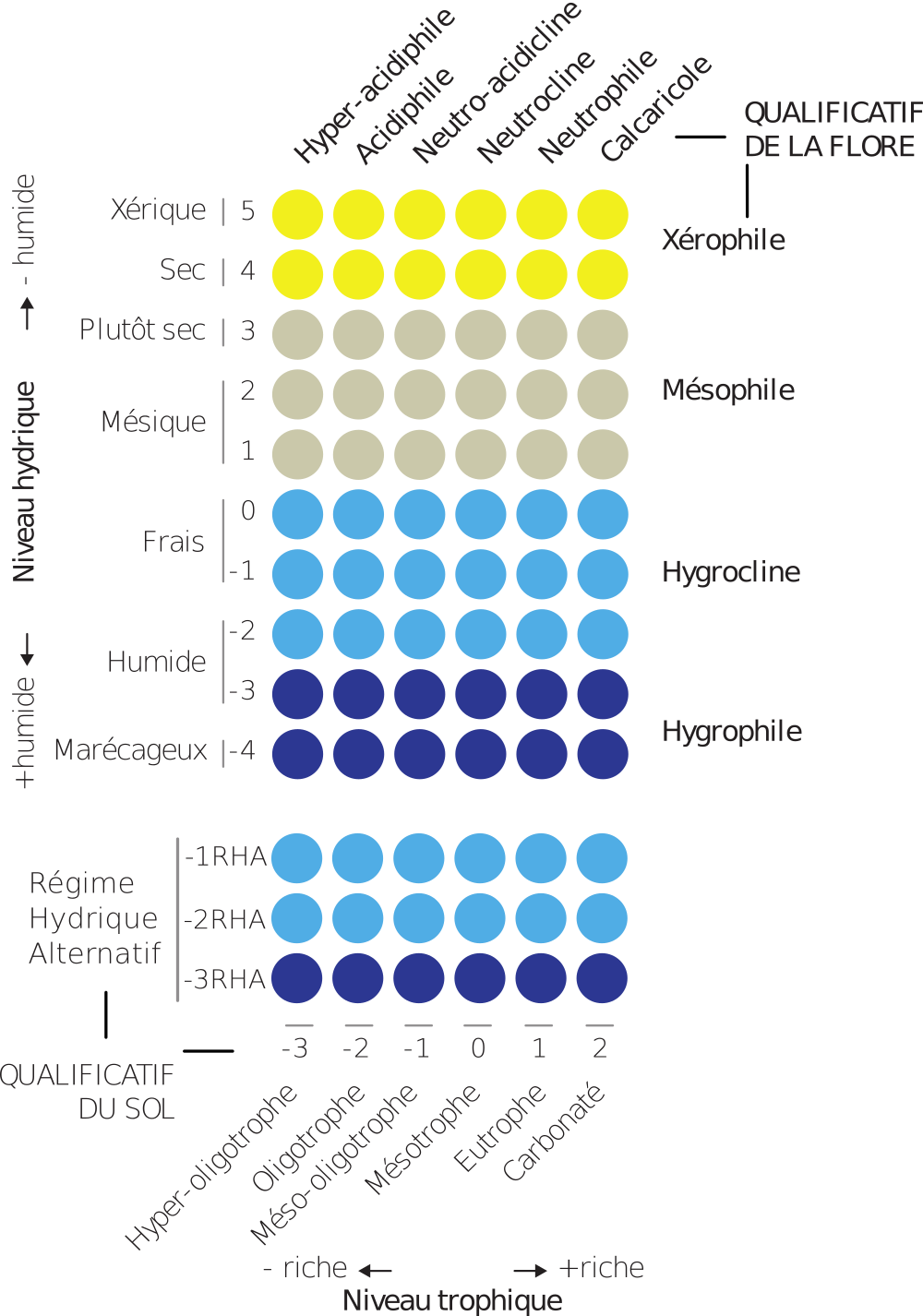
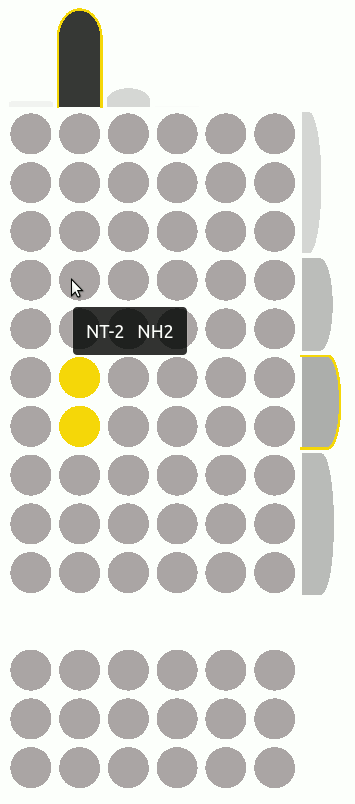
Lecture du diagnostic floristique sur l'écogramme
Pour autant que le relevé floristique contienne des plantes indicatrices, une prédiction automatique des niveaux hydriques et trophiques est effectuée. Les niveaux hydriques et trophiques sont prédits de manière individuelle ; PhytoSpy utilise donc deux modèles différents. Les résultats de prédiction sont dessinés en haut pour le gradient trophique et à droite pour le gradient hydrique, et ce, sous forme de bâtonnets dont la taille et la couleur varient proportionnellement avec la valeur du pourcentage de prédiction. En effet, l'algorithme de classification utilisé est une Random Forest : cet algorithme attribue à chaque niveau une probabilité sous forme de pourcentage. Le niveau qui se voit attribuer le pourcentage le plus élevé est le niveau qui est choisi par l'algorithme de classification. Le bâtonnet de ce niveau est entouré de la couleur jaune.Le pouvoir prédicteur de la flore indicatrice du niveau trophique est élevé : la détermination floristique de la disponibilité en éléments minéraux s'effectue de manière relativement précise. A contrario, le caractère indicateur du niveau hydrique est moins marqué. C'est pourquoi le diagnostic floristique se contente de prédire un groupe de niveau hydrique. Ainsi, un regroupement des sols secs (niveaux +3, +4 et +5), des sols mésiques (niveaux +1 et +2), des sols frais (niveaux 0 et -1) et des sols humides ou marécageux (niveaux -2, -3 et -4) est effectué. Les sols à régime hydrique alternatif, caractéristique d'une période d'engorgement hivernal et d'une période de sécheresse durant la période de végétation, ne font pas l'objet d'une détermination floristique automatisée. L'expert doit, dans ces cas de figure, effectuer sa propre détermination sur base du relevé phytosociologique et en prenant en compte les caractéristiques topographiques et pédologiques de la station.
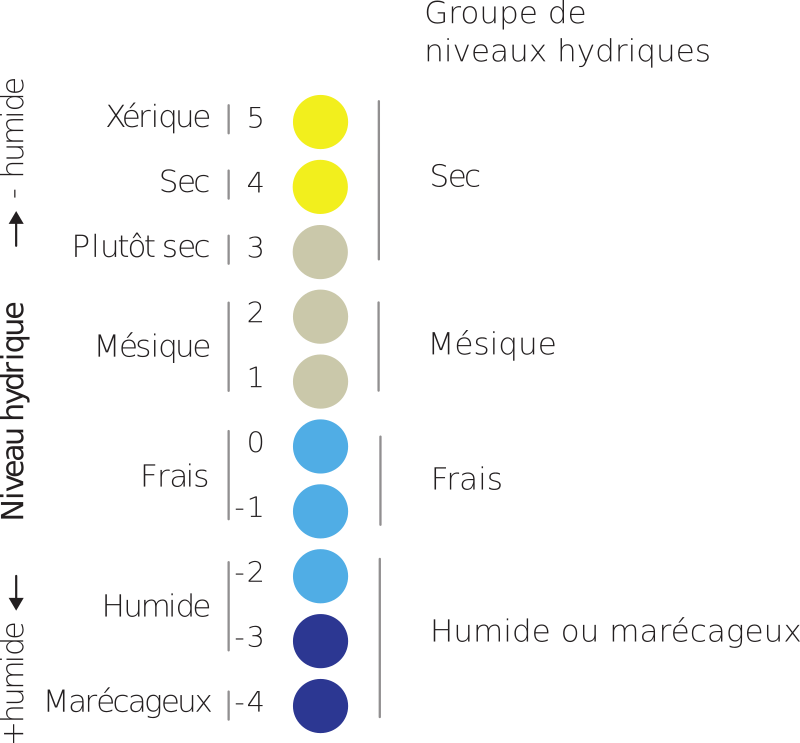
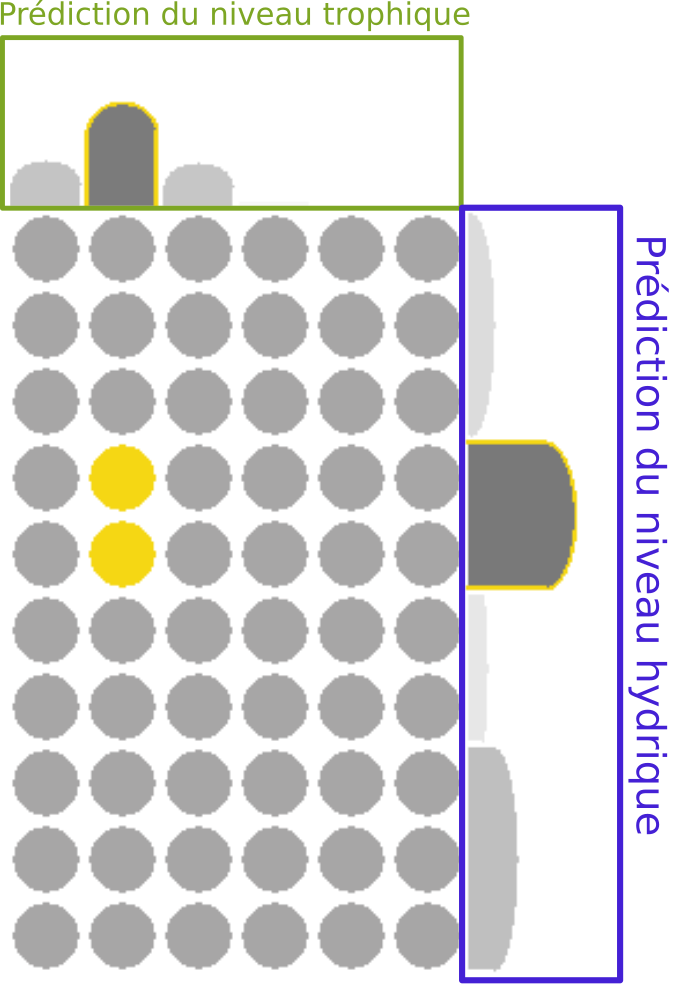
Copyright
Ce site internet est développé par Jonathan Lisein, Adeline Fayolle, Andyne Legrain et Hugues Claessens de l'Université de Liège - Gembloux Agro-Bio Tech - Gestion des Ressources Forestières. Contact : liseinjon@hotmail.comDe nombreux outils en open source ont été utilisés pour le site et pour l'entraînement des modèles de prédictions des niveaux hydriques et trophiques. Parmi ceux-ci, citons en particulier la librairie Wt en c++ pour le développement du site et l'application Ranger pour l'entraînement de l'algorithme de classification et la prédiction des niveaux hydrique et trophique.
Documents de référence
Lisein, Jonathan, Adeline Fayolle, Andyne Legrain, Céline Prévot, et Hugues Claessens. « Prediction of forest nutrient and moisture regimes from understory vegetation with random forest classification models ». Ecological Indicators 144 (2022): 109446. https://doi.org/10.1016/j.ecolind.2022.109446.
Nous renvoyons sur le site du Fichier Écologique des Essences les utilisateurs désireux d'en connaitre d'avantage sur la version du 21eme siècle du Fichier Écologique des Essences (Belgique).
Claessens, H., Prévot, C. et Lisein J., 2021. Guide d’interprétation de la flore indicatrice en forêt. 376 pages. Éditions Forêt.Nature.
Claessens, H., 2003. Observer la végétation pour choisir une essence adaptée
au milieu. Note Technique Forestière de Gembloux, n 9, 16 pages.
Petit, S., Claessens, H., Vincke, C., Ponette, Q., Marchal, D., 2017. Le Fichier Écologique des Essences, version 2.0. Forêt.Nature (143), 12–19.
Tanghe, M., 1969. Groupes écologiques, associations stationnelles et associations régionales des forêt du sud-est de la Belgique. PhD thesis, ULB, Bruxelles.
Dulière, J., Tanghe, M., Malaisse, F., 1995. Répertoire des groupes écologiques du Fichier Écologique des Essences. Tech. rep., Ministère de la
Région Wallonne, Namur.
Duvigneaud, P., 1974. La synthèse écologique : populations, communautés, écosystèmes, biosphère, noosphere, Doin Édition. Paris.